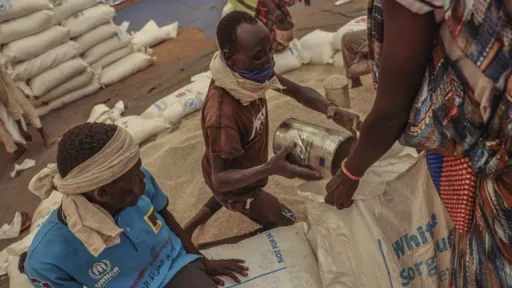By Coletta Wanjohi
What's strong, subtle, stylish, delicate, durable, versatile and luxurious at the same time? Leather, one of humankind's earliest and most utilitarian discoveries, happily wears many hats.
Surprisingly, leather products are not only hard to come by in livestock-rich Kenya, but also associated with affluence.
A simple wallet could go for about 4,000 shillings, while a handbag could make a buyer part with as much as 42,000-odd shillings (US $300).
"Leather is for people with money. If you look at where these items are sold, there is clearly a target clientele," Kenyan Camila Njeri tells TRT Afrika.
“I have never understood why leather products made in Kenya are not easy to find; yet we have so many cows in our villages!"
President William Ruto seems more aware than anyone else about the dichotomy of abundant livestock and a barely-there tanning industry that leaves the country heavily dependent on import of leather goods at high prices.
"In two years' time, I will ban import of shoes made with leather produced in other countries. The idea is to ensure we produce shoes using leather from our own cows here," President Ruto was quoted as saying recently.
“Our own hides and skin, we give to dogs to eat, and then we go ahead and import these expensive shoes, close to $200 or even $400 each," the President lamented.
According to the Kenyan President, this can change as "there is no magic in the production – it is the same hide and skin from cows."
Kenya's potential
A 2019 report by the ministry of agriculture, livestock and fisheries states that Kenya has over 18 million heads of cattle, 27 million goats, over 17 million sheep, and three million camels that are reared for milk and meat.
Skin and hide are some of the by-products of livestock slaughtered for meat, and much of that apparently currently goes underutilised.
An analysis by the Kenya Association of Manufacturers shows that in 2019, import of leather footwear and other products stood at worth over $89 million.
This was significantly higher, compared to export of $70 million worth of the same items the previous year.
Another study by the Kenya Institute for Public Policy Research shows that "despite being the fifth largest cattle producer in Africa after Ethiopia, Chad, Sudan and Tanzania, Kenya's value in leather trade remains low".
President Ruto has decided that in the next financial year beginning July 1, 2023, the leather industry will get an allocation of about $14 million.
"Those farmers who sell hide at less than a dollar or even throw them away, we shall now set a good price for meat, hide and skin," he said.
Long overdue
Tedd Josia, creative director atJokajok Luxury Leather, is focusing on producing a variety of items with hide sourced from Kenya and other African countries.
"Shoes, bags, and other leather goods can be crafted within our country to reduce import of the same and, in turn, create a trade balance and job creation," he tells TRT Afrika.
While building an African brand is vital to growth, Josia sees the government's decision to focus on growing the industry as long overdue.
“These are things that need to be done – build a strong, robust value chain, and that means creating strong African brand names owned by Africans to ensure legacy," he says.
"If the model is done correctly, yes, it can reduce the price of school shoes. But plastic lasts (soles) would still have to be imported unless some plastic industries join in," he adds.
Business failure
Beatrice Mwasi, director of the Center for Business Innovation & Training, says the industry's growth has been stunted by lags in framing and implementing policies.
Kenya's share of the global leather market, valued at around US $150 billion, stands at a mere $140 million,” she tells TRT Afrika.
Mwasi says a major challenge crippling growth is the failure of middle and small enterprises to become fully involved in the value chain.
“The industry is dominated by a few large manufacturing firms that generate the majority of revenue and possesses market manipulation capabilities," she says.
"Conversely, numerous small businesses have negligible impact on the market. So far, the focus on a few large-scale firms has not resulted in sectoral competitiveness," Mwasi adds.
























